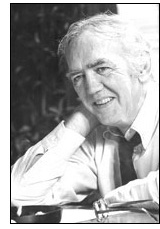Previous Montgomery County Executives
In 1968, the voters changed the County charter to a County Executive-Council form of government. The new charter created an executive branch headed by the elected County Executive and a legislative branch under an elected seven-member Council. The County Manager was replaced by a Chief Administrative Officer appointed by the Executive. The first County Executive, James Gleason, was elected in 1970. In 1990, through a Charter amendment, the number of Councilmembers increased to nine.
|
1994
|

|
Douglas M. Duncan
Montgomery County Executive Douglas M. Duncan served three terms as County Executive. He got his start in politics at an early age, going door-to-door with his mother during John F. Kennedy’s presidential campaign and was the only one of 13 children to follow in his mother’s Democratic-activist footsteps. >> More |
|
|
||
|
1990
|

|
Neal Potter
Neal Potter was elected as the fourth County Executive for Montgomery County on November 6, 1990, and was sworn in on December 3, 1990. Born on March 22, 1915, in Arlington Virginia, he was raised on a farm in Chevy Chase, Maryland. >> More |
|
|
||
|
1986
|

|
Sidney Kramer
Sidney Kramer was elected as the third County Executive for Montgomery County on November 4, 1986 and was sworn-in on December 1, 1986. He was born July 8, 1925 in Washington, D.C. and attended public schools there. >> More |
|
|
||
|
1978
|

|
Charles W. Gilchrist
A long-time resident of Montgomery County, Charles Gilchrist was the second County Executive in the County's history. He ran the affairs of a County equal to 6 of the 50 states in size (600,000 population at the time), with an operating budget of almost $1 billion and nearly 20,000 employees. >> More |
|
|
||
|
1970
|

|
James P. Gleason
In 1970, Gleason, a Republican, was elected as the first Montgomery County Executive in an overwhelmingly Democratic county. James P. Gleason was born in 1921 and received a law degree from Georgetown University in 1950. >> More |
